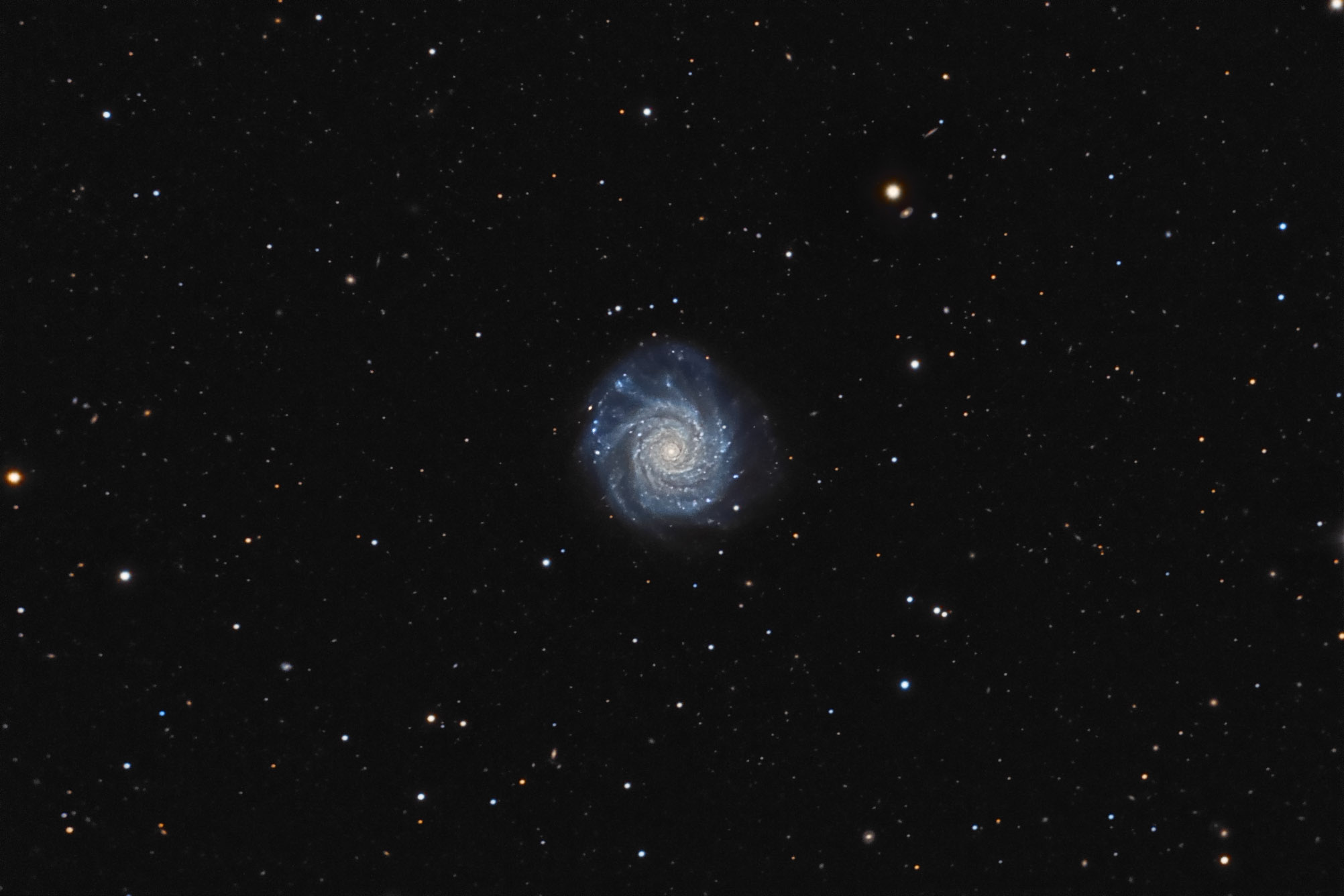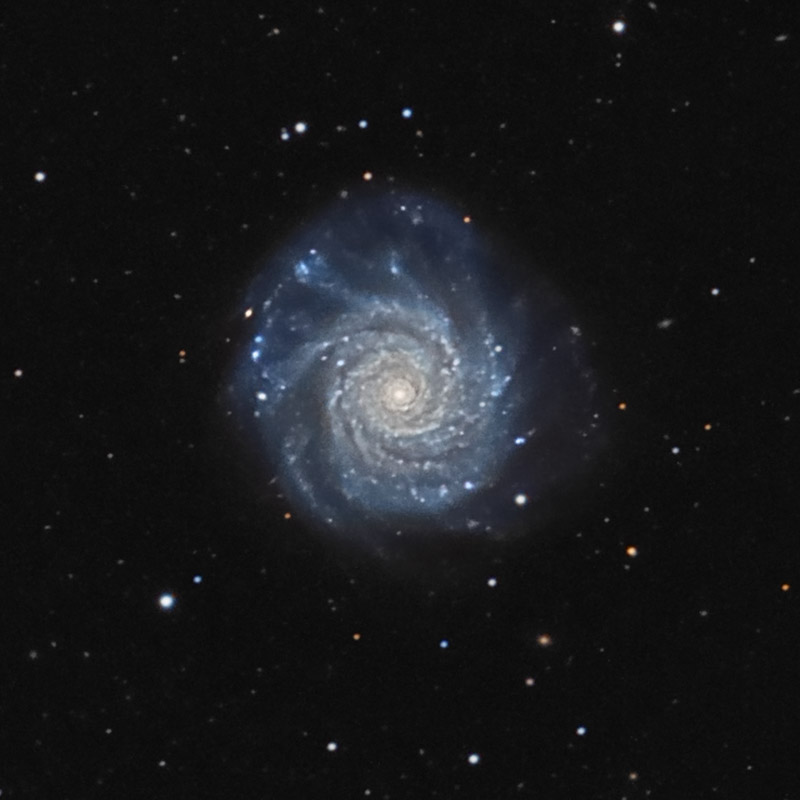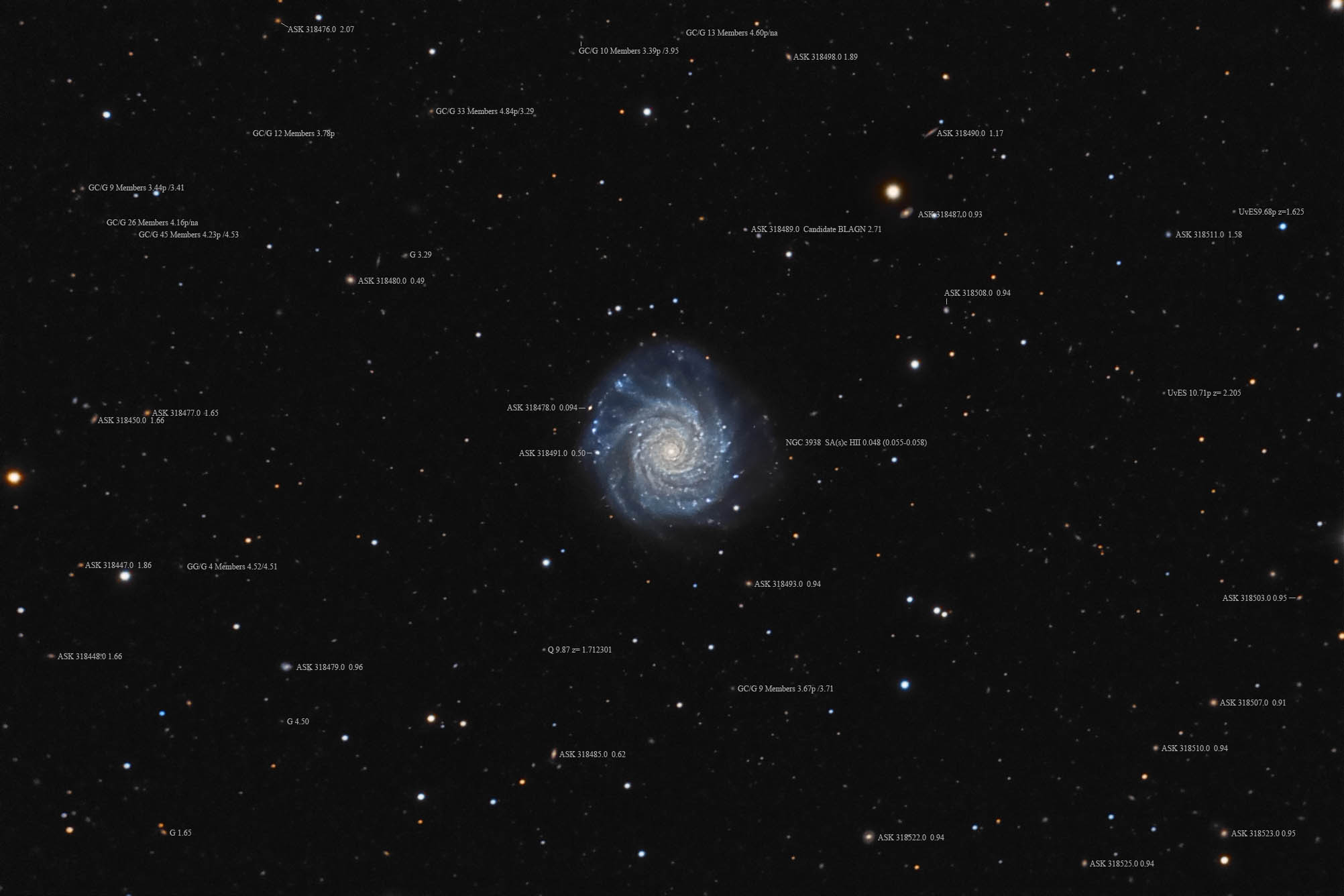Object name: NGC3938 NGC 3938 is a very photogenic, face on, many armed, blue spiral galaxy that is often imaged. It was discovered by William Herschel on April 27, 1785. It made my list because it is on the original Herschel 400 list. I take these when nothing on the main list is well positioned, or in this case, seeing wasn't up to the object I wanted to capture. In fact, it was very poor this night. So poor none of the H alpha regions I wanted to capture survived the seeing, especially since I took red when it was lowest and in the worst seeing. I hoped its longer wavelength would help but it didn't. In fact, it is so red starved I couldn't bring it up to even close to blue without creating so much color noise I gave up trying. The core is likely somewhat redder than I show it though it isn't nearly as red as in most galaxies. Another for the proverbial reshoot list that rarely happens.
It is located near the back leg of Ursa Major. Redshift puts it some 48 million light-years away though a single Tully Fisher estimate says 55 million light-years and an estimate using a 2005 type II (not 1A) supernova comes up with 58 million light-years. Flip a three sided coin. I also saw a paper saying 43 million light-years so make that a 4 sided coin. Using the 48 million light-year distance I get a diameter of about 77 million light-years making this a good sized spiral galaxy.
My visual note from April 16, 1985 with my 10" f/5 at up to 150x on a fair but humid night reads: "Large, round, apparently face on galaxy with an even halo. It has a starlike object (core?) but not at its center. Is this an off-center nucleus of just a 14th magnitude field star?" This photo shows it to be the nucleus and the galaxy to be rather unsymmetrically distributed around it leading to my off-center comment.
A couple background galaxies are seen through it, two had redshift data so are marked on the annotated image. There are several galaxy clusters and groups in the image as well. Many have a good spectroscopic redshift for the Bright Cluster Galaxy but only a photographic estimate for the cluster itself. Both are shown with a "p" denoting the photographically determined value. In some cases, there was no redshift for the BCG which is noted with /na. In other cases, it used the same photographic redshift. When that happened I only note the photographic redshift value once (no second value or na). UvES denotes quasar candidates with only photographic redshift estimates. Objects with only coordinates for a designation are noted by type GG for galaxy group, GC for galaxy cluster, G for Galaxy, Q for quasar etc.
The glow about the middle of the far right edge is from a bright star just off the chip. I should have cloned it out.
14" LX200R @ f/10, L=4x10' RGB=2x10', STL-11000XM, Paramount ME Related Designation(s):2MASS J11524942+4407146, 2MASX J11524945+4407146, 6C B115014.6+442358, AKARI J1152497+440719, B3 1150+444, CGCG 1150.2+4423, CGCG 214-034, CGCG 215-002, GB6 J1152+4407, HDCE 0706 NED012, HIJASS J1152+44, IRAS 11502+4423, IRAS F11502+4423, ISOSS 038, ISOSS J11527+4408, ISOSS J11528+4407, LDCE 0867 NED044, LGG 269:[G93] 002, MCG +07-25-001, NGC 3938, NGC3938, NSA 140384, PGC 037229, SDSS J115249.43+440714.6, UGC 06856, UMa Cluster:[PRL2014] U060, USGC U480 NED47, UZC J115249.4+440714, [M98j] 170 NED16, [RHM2006] SFGs 014, [SLK2004] 0638, | | 

